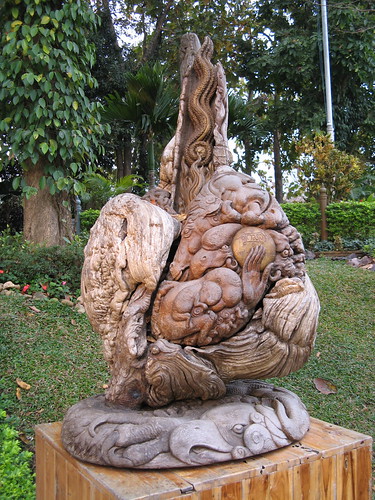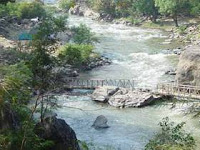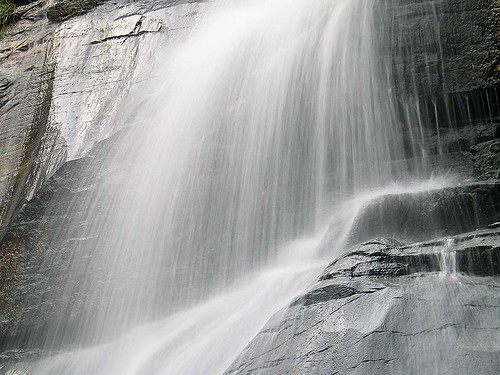 Located in the forested area of Khun Mae Kuang, Doi Saket District, Chiang Mai Province, the Study Centre covers an area of over 3,000 acres. It was established on His Majesty King Bhumibol Adulyadej’s initiation in order to conduct studies and research on various development patterns such as forest development. The Royal initiative includes three classes of tree cultivation: those cultivated for fruit, those for firewood, and those cultivated for sale and purely economic benefits. This cultivation yields benefits according the value produced in each case, as well as a more diffuse benefit in terms of increased moisture retention in the soil and a general increase in the health of the land itself.
Located in the forested area of Khun Mae Kuang, Doi Saket District, Chiang Mai Province, the Study Centre covers an area of over 3,000 acres. It was established on His Majesty King Bhumibol Adulyadej’s initiation in order to conduct studies and research on various development patterns such as forest development. The Royal initiative includes three classes of tree cultivation: those cultivated for fruit, those for firewood, and those cultivated for sale and purely economic benefits. This cultivation yields benefits according the value produced in each case, as well as a more diffuse benefit in terms of increased moisture retention in the soil and a general increase in the health of the land itself.At the entrance to the Study Centre, the area begins with a forestry study project which has served to improve the environment in the Centre area, eliminate forest fires, and produce a moist climate bursting with fertile water sources. Subsequently, visitors will come upon facilities for ongoing studies of industrial agriculture and fishery studies at check dams, as well as farms for livestock and dairy cattle.
The Study Centre’s main aim is to function as a complete one-stop service centre replete with practical wisdom aptly demonstrated for farmers to learn and apply the model into practice. It also provides services, such as supporting animal husbandry activities and providing seeds, and giving advice and guidance on techniques which farmers can adopt in their daily lives. The Study Centre promotes the coexistence of man and land involving the distribution of the water supply to agricultural areas and the establishment of forest and fishery stations.
In the words of HM King Bhumibol, “Let this Study Centre function as living museum of Mother Nature.”
The Study Centre is open every day from 08:30-16:30, but visitors are advised to call ahead in order to obtain bungalow reservations and camping permission. Visitors must supply their own camping gear.













